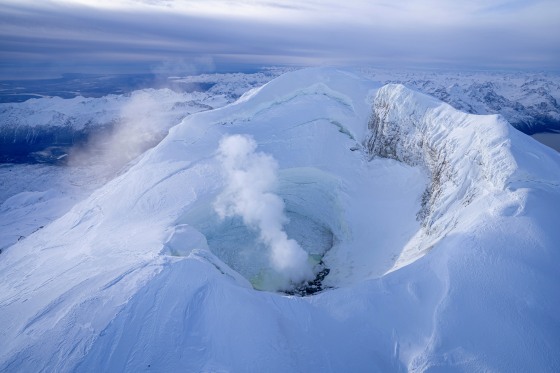Scientists are urging people who live in south-central Alaska to begin preparing for a possible eruption of Mount Spurr.
The Alaska Volcano Observatory said now is a good time for Alaskans to "familiarize themselves with the possible hazards of a Spurr eruption" following last week's announcement that the likelihood of an eruption has increased.
"The major hazards to Alaska residents from Spurr would be from ash risk to aviation and possible ashfall," the observatory said Wednesday on X.
Ash can hurt the eyes and lungs and damage vehicles, and its weight can make it physically demanding to clear up. The observatory cautioned residents to stay indoors and to wear masks outside if ash is present.
The eruption would cause volcanic mudflows and pyroclastic flows, which are hot, high-speed flows of ash, volcanic rocks and gas. The observatory said the pyroclastic flows would affect the areas immediately surrounding the volcano. The volcanic mudflows pose very little risk because there are no communities in the area.
Although people do not live in the immediate area, Mount Spurr is a tourist destination. Nearby towns include Beluga, Nikiski, Salamatof, Tyonek and Susitna. Mount Spurr is nearly 80 miles from Anchorage.
"Anyone considering a visit to the area around Spurr should be aware of these hazards, keep up to date with Spurr activity by signing up for the Volcano Notification Service, and obey any restrictions that might be put in place by land and emergency managers," the post said.
The observatory said the timing, location and duration of the impacts depend on weather and the size and duration of the eruption.
The Alaska Volcano Observatory's website says eruptions in 1953 and 1992 were explosive. In the 1953 eruption, a single powerful blast about an hour long created a plume that was 30,000 feet high.
About a quarter-inch of ash fell on Anchorage, shutting down what is now Ted Stevens Anchorage International Airport for two days.
In 1992, the volcano's eruption sparked three explosions that occurred in June, August and September. The plume from the first explosion reached 47,500 feet, and the second explosion closed the Anchorage airport for 20 hours.
